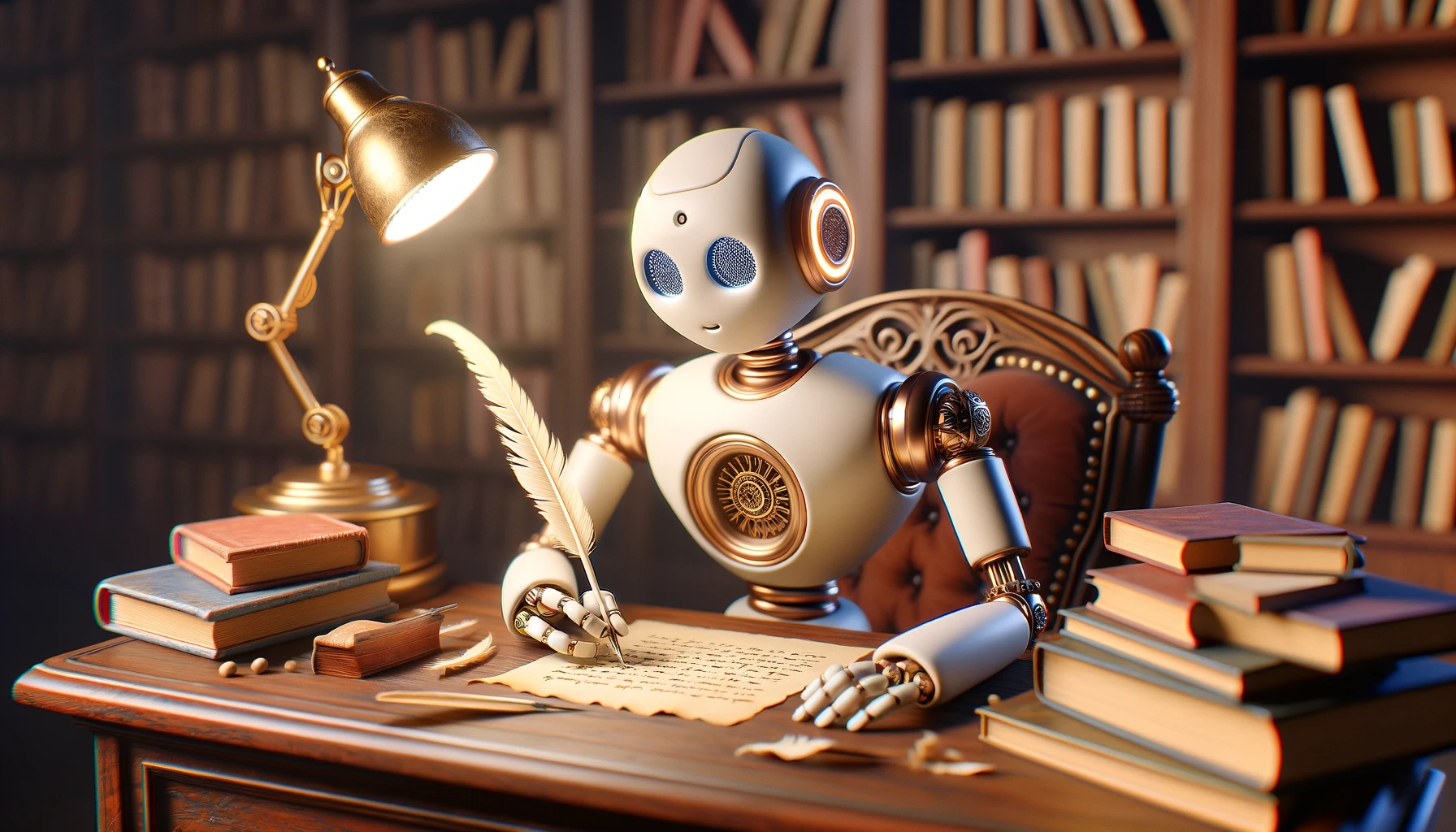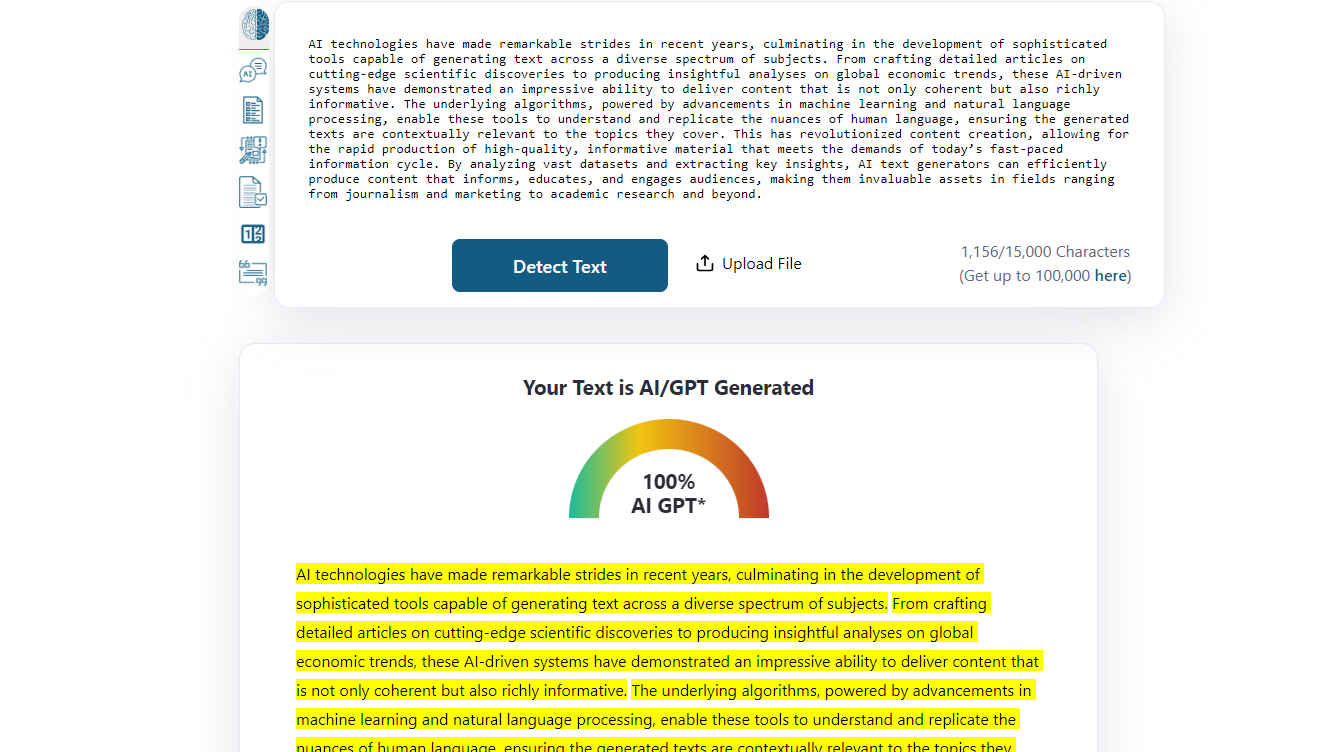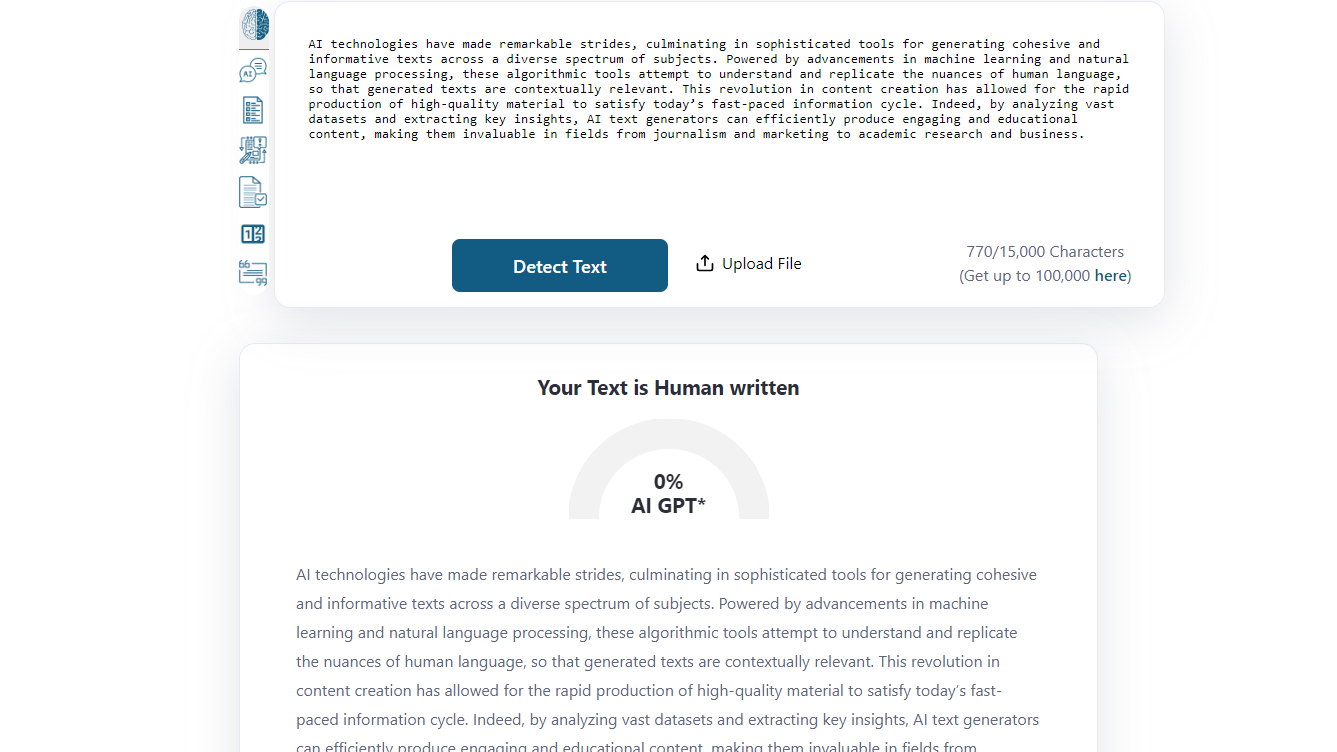
How to Humanize AI Text
Brought to you by the Chief Editor of Editly AI, this post helps you understand the characteristics of AI text that make it entirely distinct from human text. It also shows you how to humanize your AI text so that it has a greater impact on your teachers, employers, or clients. This includes a detailed example that illustrates the process of changing a 100% AI text to a 100% human text.
What is AI and How has It Changed Our Communication?
Artificial intelligence (AI) now plays a central role in generating various types of text, from essays and homework assignments to marketing and business material. However, concurrent with the rise of AI text generators, has come a desperate need to humanize AI-generated content—a need for communication to regain its soul. This article explores AI text and its characteristics, its easy detection, and the ways in which to effectively humanize AI text by bringing a human touch into digital communications.
What is AI Text?
AI text refers to content generated by artificial intelligence algorithms that have been designed to mimic human writing on a seemingly endless array of topics. Popular AI text generators such as OpenAI’s ChatGPT and Google's Bard respond to prompts in order to create essays, business and marketing documents, emails, and even creative writing.
How Do AI Detectors Know That a Text is Written by AI?
AI detectors can identify AI-generated text by focusing on patterns that are typically unnatural for human writers. Popular AI text detectors like ZeroGPT and Turnitin analyze aspects like syntax, word choice, and sentence structure. They then utilize specific scoring systems that give a percentage that ranges from 100% AI (AI text) to 0% AI (Human text).
Key Reasons AI Text is Identifiable:
- Frequent Repetition: AI often repeats phrases or ideas, thereby missing the nuanced variation of human writing.
- Overuse of Common Connectors: AI may overly rely upon specific transitional phrases or connectors.
- Overload of Keywords: AI-generated text often repeats keywords excessively.
- Uniformity of Syntax and Style: The writing style of AI tends to be consistent throughout, lacking the stylistic variations typical in human writing.
- Uniformity of Tone: AI-generated text may maintain a consistent, robotic tone inconsistent with human writing.
- Unnatural Syntax: AI may use overly complex or unusual sentence structures.
- Unnatural Coherence: AI-generated texts can miss the natural digressions of human thought in favor of monotonous relevancy.
- Misuse or Lack of Idioms: AI text might misuse or completely avoid idiomatic expressions.
- Omission of Personal Anecdotes: AI lacks the personal touch of human experiences or anecdotes.
- Lack of Contextual Understanding: AI might miss subtle context clues that a human writer would naturally incorporate.
Consequences of AI-Generated Text Detection
Serious repercussions can result if a text that you submit as your own is later determined to be AI-generated by teachers, employers, or clients. These might include academic penalties, workplace sanctions, or even loss of professional and personal reputation. These potential repercussions underscore the importance of humanizing AI-generated content.
How Can You Humanize AI Text?
Humanizing AI text brings the soul back into your writing, marking it as authentic in the eyes of the reader. It involves rewriting AI-generated content to infuse it with the life and characteristics of human writing. This process may include eliminating repetition, varying sentence structures and vocabulary, and incorporating idiomatic expressions and personal opinion. Its ultimate goal is to enhance readability, engagement, and the overall perception of the text as authentically human.
Methods to Humanize AI-Generated Text:
- Eliminate Repetition: Find and delete redundant words and phrases that are often the hallmark of text that is AI generated.
- Incorporate Variability in Sentence Structure and Vocabulary: Mix up the text’s syntax and vocabulary in order reduce monotony and a robotic tone.
- Integrate Personal Opinions and Examples: Introduce subjective elements such as opinions and examples to immediately differentiate the text from that produced by AI text generators.
- Incorporate Idiomatic Expressions: Use phrases and idioms that are commonly found in human conversation.
- Enhance Contextual Relevance: Infuse the text with culturally relevant examples and current events that are often unknown by AI.
- Proofread with a Human Touch: Adjust the text to include stylistic choices characteristic of human writing.
- Edit for Natural Flow: Revise the text to include natural digressions and conversational elements that reflect human thought processes.
Let’s Look at an Example of How AI Text can be Humanized
The following paragraph was generated by ChatGPT 4. Before you read, please recall the above-mentioned characteristics of AI-generated text: Frequent Repetition, Overuse of Common Connectors, Overload of Keywords, Uniformity of Syntax and Style, Uniformity of Tone, Unnatural Syntax, Unnatural Coherence, Misuse or Lack of Idioms, Omission of Personal Anecdotes, and Lack of Contextual Understanding. See if you can spot the presence or absence of these elements.
Sample AI-Generated Text
AI technologies have made remarkable strides in recent years, culminating in the development of sophisticated tools capable of generating text across a diverse spectrum of subjects. From crafting detailed articles on cutting-edge scientific discoveries to producing insightful analyses on global economic trends, these AI-driven systems have demonstrated an impressive ability to deliver content that is not only coherent but also richly informative. The underlying algorithms, powered by advancements in machine learning and natural language processing, enable these tools to understand and replicate the nuances of human language, ensuring the generated texts are contextually relevant to the topics they cover. This has revolutionized content creation, allowing for the rapid production of high-quality, informative material that meets the demands of today’s fast-paced information cycle. By analyzing vast datasets and extracting key insights, AI text generators can efficiently produce content that informs, educates, and engages audiences, making them invaluable assets in fields ranging from journalism and marketing to academic research and beyond.
The Verdict on the AI Text Sample
For experienced readers and editors, the above paragraph is instantly identifiable as AI-generated. It may not be surprising then that AI text detectors can also immediately flag the paragraph as AI text. Indeed, here is the verdict of ZeroGPT, a popular AI detector commonly used by students and professionals: 100% AI.

How Should an Editor Humanize such a Text?
Let’s turn our attention to how an editor—whether you or a professional at Editly—might be able to change the 100% AI text. Remember, the methods that we discussed earlier: Eliminate Repetition, Incorporate Variability in Sentence Structure and Vocabulary, Integrate Personal Opinions and Examples, Incorporate Idiomatic Expressions, Enhance Contextual Relevance, Proofread with a Human Touch, and Edit for Natural Flow. Now, let’s take a look at how I change the paragraph to humanize it. (For a step-by-step guide, please see "How to Change AI Text to Human Text in 5 Steps.")
Final Rewritten AI Text (Clean Version)
AI technologies have made remarkable strides, culminating in sophisticated tools for generating cohesive and informative texts across a diverse spectrum of subjects. Powered by advancements in machine learning and natural language processing, these algorithmic tools attempt to understand and replicate the nuances of human language, so that generated texts are contextually relevant. This revolution in content creation has allowed for the rapid production of high-quality material to satisfy today’s fast-paced information cycle. Indeed, by analyzing vast datasets and extracting key insights, AI text generators can efficiently produce engaging and educational content, making them invaluable in fields from journalism and marketing to academic research and business.
The Verdict on the Paragraph after My Rewrite
By using the discussed humanizing methods, I was able to rewrite the paragraph in such a way that it simply feels different than the original AI-generated text. It feels more authentic and less robotic. But, very importantly, none of the necessary content from the original has been lost. If anything, it has been enhanced because it is not drowned out by unnecessary repetition and monotonous style. Please also note the change in text length—from 159 words in the original to 105 words in the rewrite, or a 34% reduction in word count. Not surprisingly, my efforts at rewriting the AI text also completely reversed the verdict of ZeroGPT: from 100% AI all the way down to 0% AI. In other words, by breathing life back into the text, it has become a 100% human text both in the eyes of humans and AI detectors.

Benefits of Having an Expert Editor to Humanize AI Text
As shown in the above example, an expert editor skilled in humanizing AI-generated text can significantly enhance its quality, making it more human and more engaging. Therefore, while AI offers unparalleled efficiency in content creation, expert editors such as those at Editly AI can be invaluable when humanizing your text.
If you need to humanize your AI text, don’t wait to get started on Editly.


Paul S.
Online editing, proofreading, and rewriting for both human and AI text. Specialties include admissions essays, academics, business, blogs, and ChatGPT to human text. Chief editor at Editly AI.